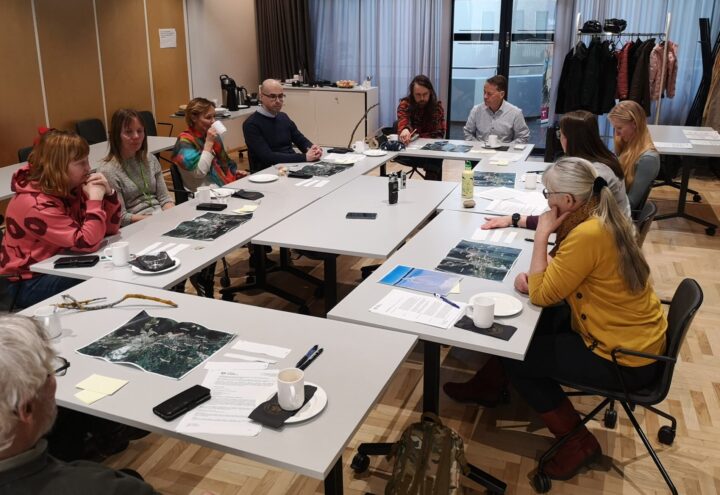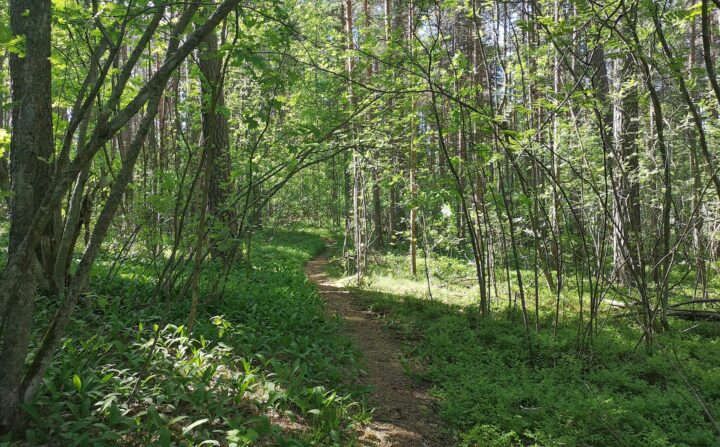The construction of an ecosocial niche in the era of nature-positive cities
Misa Tuomala, Department of Geography and Geology, University of Turku; Green Transition, City of Turku
Many cities have set strategic targets for nature positivity. Last year, the ten biggest municipalities in Finland made a joint commitment to stop nature degradation and strengthen biodiversity. Most recently, the Turku City Board approved reaching nature positivity. Nature positivity refers to a situation where biodiversity will increase in a certain area, guiding actions in the city on different levels, from strategic decision-making to land use planning and concrete measures in neighbourhoods. This engages multiple actors in the nature work, from decision-makers to urban planners and human and non-human residents, companies, and universities.
Nature positivity has a concrete effect on the dynamic city environment. Hence, nature positivity can be seen as a niche-constructive concept. The background of niche construction theory is in evolutionary biology, and it refers to a process where an organism modifies its environment, the niche, affecting its own future and evolutionary lineage, and other organisms’ niches simultaneously. Humans are “ultimate constructors”, and this modification process is perhaps nowhere greater and more visible than in cities. Nature positivity as a normative principle will guide this construction process in a certain way, as climate and economic targets have done.
Cities are open metabolic systems that need resources to keep essential functions ongoing. This is a precondition for growth, in which some natural harm is always caused. Therefore, a nature-positive city is not possible without applying compensation. Biodiversity offsetting is a policy and management tool that aims to compensate for nature losses caused by, for example, complementary construction by replacing them somewhere else. It is already part of the Nature Conservation Act (9/2023) and a trending concept in Finland’s land use sector. In Turku, we have studied an ecosocial approach to compensation. We see urban nature simultaneously as both social and ecological, as these aspects overlap in urban green spaces. Green spaces can be biodiversity hotspots, but they also have multiple social meanings among residents. Hence, the urban environment consists of multiple values.
Multiple values of urban nature construct the ecosocial niche
In collaboration with Coevolvers and Must projects, we organized three focus group discussions for local human residents in urban neighbourhoods of three cities: one each in Turku, Lappeenranta, and Tampere. The residents discussed the meaning of urban nature in their surroundings. The discussion framework was created based on the Life Framework of Values (O’Connor & Kenter, 2019) and its mirrored version (Willemen et al., 2023), which illustrates different relationships between humans and nature.

Figure 1. In three focus groups, residents discussed about their valuations and relations to local nature. Photo: Misa Tuomala.
According to the first observations from the focus group discussions, there are multiple values and life frames associated with local nature. During the event, participants were eager to share their experiences, observations, and practices. Nature offers them recreation possibilities, food, and activities, but local nature is also covered with memories and experiences. At the same time, they are concerned about non-humans’ well-being and make an effort to improve their lives. They described their close multispecies coexistence in a local nature. They were also happy to learn from each other. This is what niche construction is all about: learning and modification of social practices are constructing the urban niche.
Compensation is an interesting concept from the niche construction point of view. When niche construction is associated with co-evolution and development, the purpose of the compensation is to balance the effects of development. It aims to save lost values and functions by replacing them somewhere else. However, compensation is indubitably niche-constructive as it inevitably changes the ecosocial niche of a certain place, always at some level, as complete equivalence is impossible. Actors adapt to a changing environment, and co-evolution continues.
Different values guide the niche construction, and the ecosocial niche is constructed by multiple values and actors in the city. The residents act in their local environment and make choices and have practices that modify their surroundings. Different views of nature, the life frames, construct different environments. Additionally, there is a value basis behind land use planning, as well as concepts like nature positivity. It is essential to recognize those values to understand the construction of the ecosocial niche in an urbanising world. Doing so, it is possible to tackle the wicked problems of growing cities.
The blog post is based on Tuomala’s presentation “Nature-positive cities, plural values, and urban development: Cultural niche construction in urban environments” at the Symposium on Multispecies Cultural Niche Construction for Biodiversity Recovery, held on April 16th‒17th, 2025, in Turku.
Literature
O’Connor, S., & Kenter, J. O. (2019). Making intrinsic values work; integrating intrinsic values of the more-than-human world through the Life Framework of Values. Sustainability Science, 14(5), 1247–1265. https://doi.org/10.1007/s11625-019-00715-7
Willemen, L., Kenter, J. O., O’Connor, S., & van Noordwijk, M. (2023). Nature living in, from, with, and as people: Exploring a mirrored use of the Life Framework of Values. Current Opinion in Environmental Sustainability, 63, 101317. https://doi.org/10.1016/j.cosust.2023.101317
